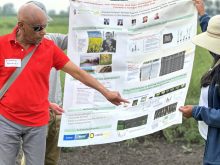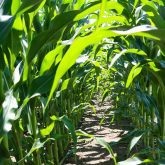Canola growers have new weapons against sclerotinia.
The Canola Council of Canada announced June 26 that three sclerotinia-related links top the page of its Canola Calculator, an online hub that also provides resources and tools for harvest loss, blackleg yield loss estimations, seeding rates, plant density targets and more.
Why it matte: Higher precipitation this spring may set the stage for a sclerotinia resurgence following last year’s dry weather.
Read Also

Manitoba boosts stake in cereals centre to $23.5 million
Premier Wab Kinew said the additional project funds will help ‘Trump-proof’ the provincial economy.
The first addition is a risk assessment tool. Sclerotinia is heavily dependent on weather and crop conditions, the council noted, making spray decisions difficult.
The tool is separated into two aspects; one to gauge risk when crop is 20-50 per cent flowering and another to assess whether the spray decision was right, based on severity of sclerotinia when crop is more mature (30-60 per cent seed colour change.)
To assess risk at flowering, producers are asked to share location, date, local rainfall, outlook for further rain, stand density, rotational information, severity of last sclerotinia infection and scouting observations. The tool will then make a recommendation on whether fungicide should be applied.
The council has also launched a sclerotinia economic calculator. It calculates an economic threshold for the fungus based on a farmer’s individual scenario. Customizable fields include expected grain price, fungicide price, yield and anticipated infection levels.
A sclerotinia resource library rounds out the tools. Growers can access images, video and other educational material.
The three tools have been in the works for three years, with collaboration from Agriculture and Agri-Food Canada and with support from federal funds and the three provincial canola groups on the Prairies.
According to the June release, the tools evolved from existing sclerotinia stem rot checklists previously used by industry.
“These new tools are designed to help growers and agronomists make timely, informed decisions on whether a foliar fungicide application is advised,” said Chris Manchur, CCC’s agronomy specialist and sclerotinia lead.
“Farmers have a lot of choices to make throughout the growing season. It’s very exciting to put this new technology in their hands to help simplify decision making and assess potential impacts on productivity and profitability.”
















